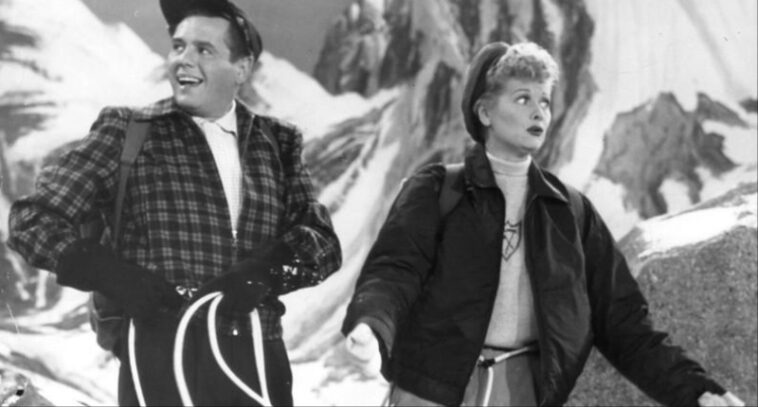Before streaming wars, before prestige cable, before you could even “change the channel” without getting up off the couch, there was Black and White at its prime. In the 1950s, a glowing box in the living room became the new American hearth, and the stories it told in vivid monochrome didn’t just entertain—they built the very foundation of the TV we watch today.
This was more than entertainment; it was a weekly ritual that hushed neighborhoods and gathered entire families, all staring at that single glowing screen in unison. From gunslinging marshals to wisecracking housewives and visitors from another dimension, these series set the templates for the programming we know today.
On that note, grab a TV dinner, settle in, and let’s spin the dial back to 11 black-and-white classics that are more than just nostalgia.
11. The Phil Silvers Show (1955-1959)
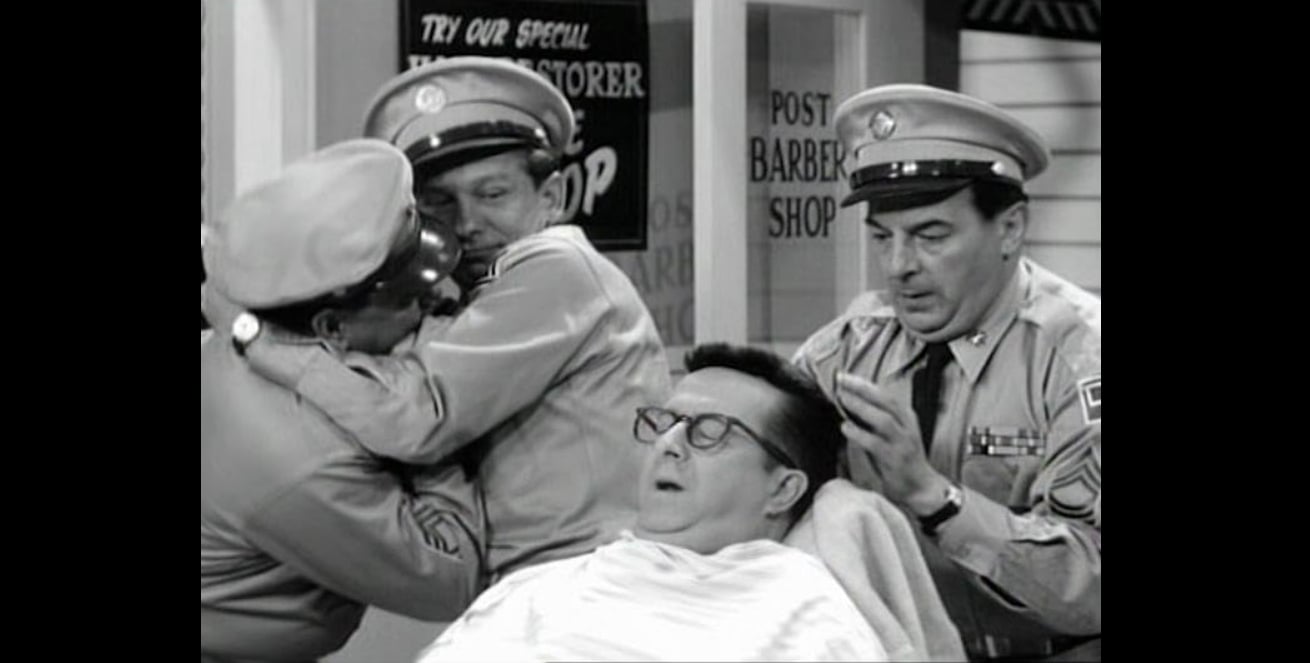
Long before Hawkeye Pierce was bucking the system in M*A*S*H*, Master Sergeant Ernest G. Bilko was perfecting the art.
The Phil Silvers Show was a masterclass in rapid-fire dialogue and brilliant ensemble comedy. Set on a sleepy Kansas army base, the show revolved around the perpetually scheming Sgt. Bilko and his motor-pool platoon, who were always looking for the next get-rich-quick angle. The series was an incisive, cynical, and relentlessly funny workplace comedy that just happened to be in the U.S. Army.
Why It Defined the Era: It showcased a hilarious anti-authority streak that was a clever counter-current to the decade’s buttoned-down conformity. Bilko was not a hero; he was an operator, and audiences adored him for it.
10. Perry Mason (1957-1966)
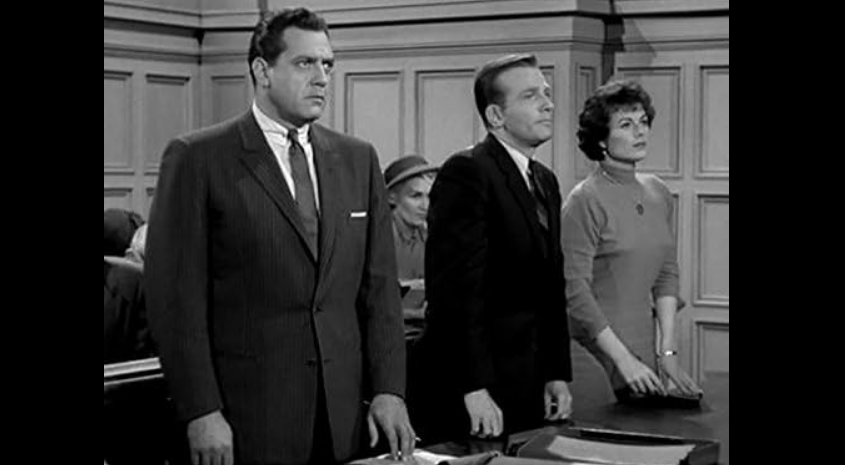
Forget Law & Order—the gavel of all TV legal dramas first dropped here (there were other less prominent earlier shows like Your Witness (1949–1950) and The Black Robe (1949–1950) featuring courtroom settings, but they were never as influential).
Raymond Burr’s Perry Mason was the unbeatable defense attorney who didn’t just win his cases; he obliterated them, almost always by goading someone on the witness stand into a dramatic, tear-filled confession. Every episode was a tightly-wound mystery that culminated in that iconic courtroom climax.
Why It Defined the Era: Perry Mason pioneered the template for the entire legal procedural genre. The formula was so perfect and so satisfying that it’s been copied, paid homage to, and parodied for over 60 years. Plus, who didn’t want a lawyer who was guaranteed to win it?
9. Leave It to Beaver (1957-1963)
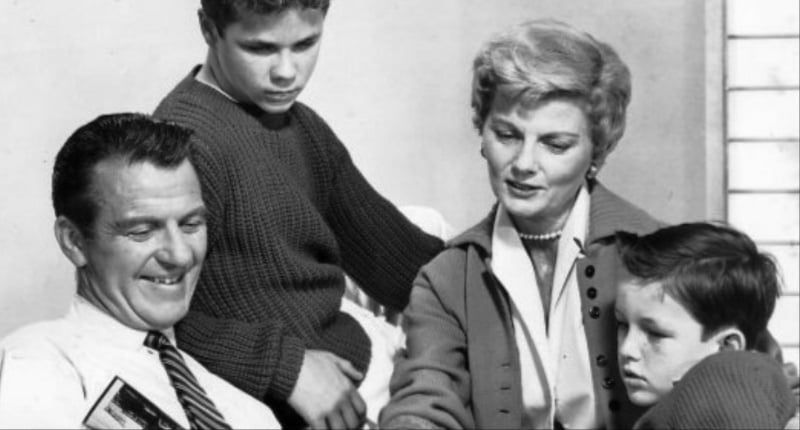
“Gee, Wally…” It was the sound of a report card hidden, a baseball thrown through a window, or a white lie about to unravel.
If one show captured the idyllic, squeaky-clean fantasy of 1950s suburbia, it was this one. But what made Leave It to Beaver so enduring wasn’t just the perfect lawn or June Cleaver’s pearls. It was that the show was told from a kid’s point of view. The world’s problems were small-scale and relatable: a bad report card, a neighborhood bully, or trying to figure out girls—the stuff that actually kept kids up at night.
Why It Defined the Era: It cemented the archetype of the “perfect” American family in our pop culture consciousness. While often parodied for its innocence, its easy laughs and warmth made it a touchstone for generations.
8. The Adventures of Superman (1952-1958)

Long before the MCU, George Reeves donned the cape and became the definitive Man of Steel for an entire generation. “Leaping tall buildings in a single bound” (with the help of a springboard), he fought for “truth, justice, and the American way.”
The show, which transitioned to color in its later seasons, was a perfect mix of sci-fi adventure, crime-fighting, and wholesome heroics. Kids in the ’50s planned their afternoons around this show—Superman wasn’t just drawings on a page anymore, he was real.
Why It Defined the Era: It was the first massively successful superhero show, proving that comic book characters could be hits on the small screen. Moreover, the show greatly influenced future comic book adaptations on television.
George Reeves’ Legacy: Reeves’ portrayal was so iconic that it overshadowed his other acting roles, and his tragic death in 1959 added to the show’s mystique. His performance is still celebrated by fans of classic television.
7. Dragnet (1951-1959)
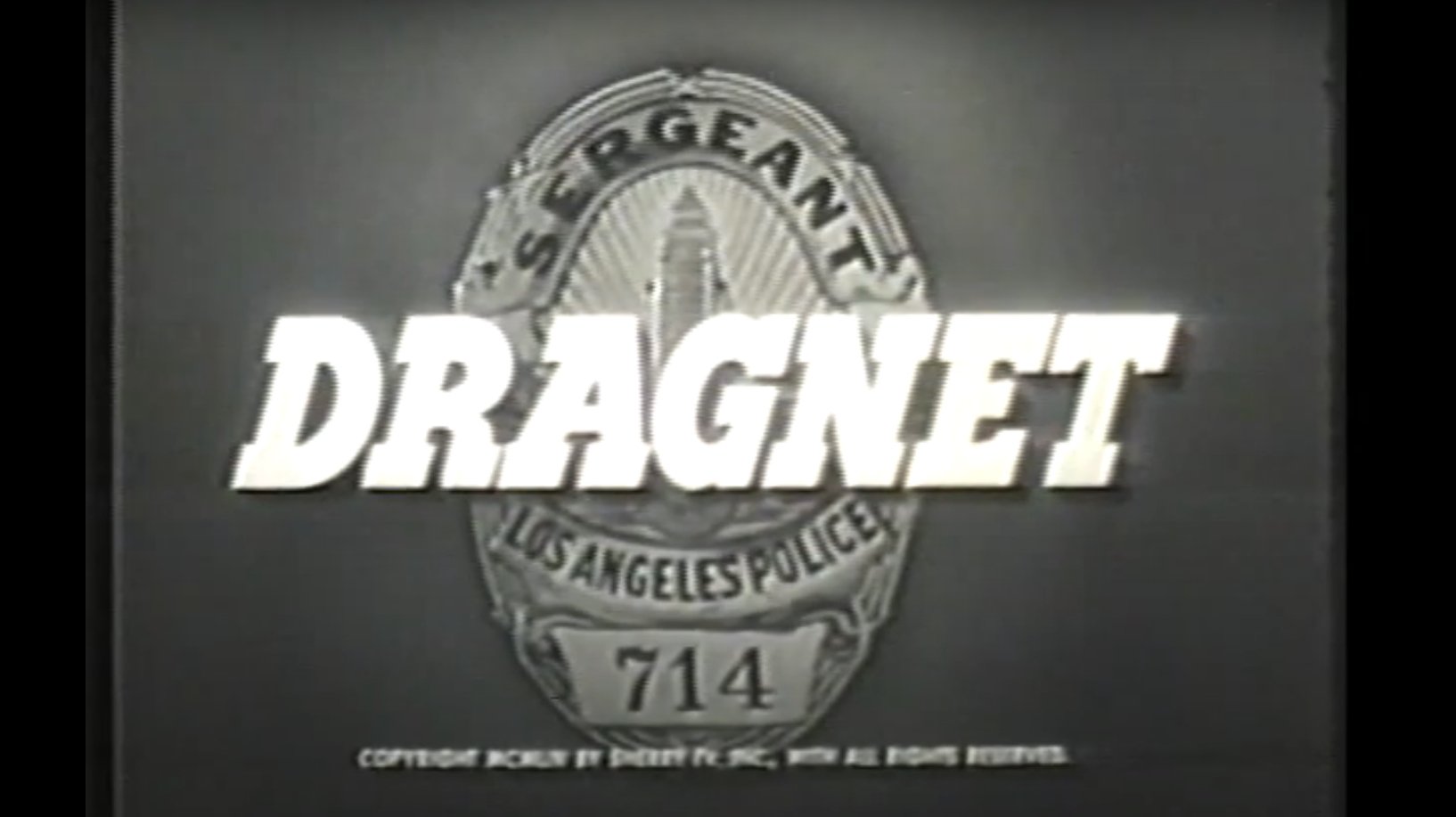
Dum-da-DUM-dum. That opening score is iconic for a reason: it perfectly established the serious, unflinching tone of the show that followed. Dragnet wasn’t just a cop show; it was a revolution.
Sergeant Joe Friday’s deadpan, no-nonsense delivery and the show’s commitment to “realism” (based on actual LAPD case files) were a stark departure from the more theatrical dramas of the day. The clipped dialogue and focus on methodical police work felt gritty, modern, and incredibly authentic.
Why It Defined the Era: Dragnet invented the modern police procedural. It’s “just the facts” style influenced everything from Adam-12 to the entire CSI franchise. It made being a cop look like serious, painstaking business.
6. Gunsmoke (1955-1975)
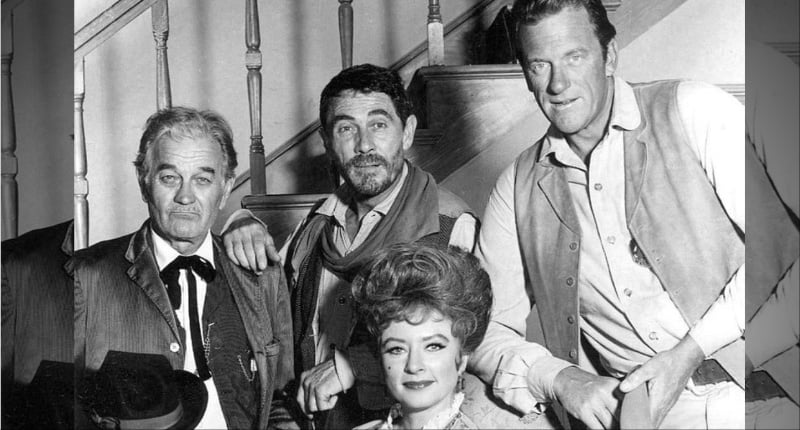
Forget quick-draw duels at high noon. Gunsmoke was the original “adult Western.” Set in the dusty, dangerous streets of Dodge City, Kansas, the show centered on Marshal Matt Dillon (a towering James Arness). The stories were less about action and more about character, morality, and the grim realities of frontier justice.
Filmed in evocative black-and-white for its first 11 years before transitioning to color in 1966, the series was complex, moody, and ran for a staggering 20 seasons——becoming the longest-running live-action scripted series of its time.
Why It Defined the Era: Gunsmoke elevated the TV Western from a kid’s genre to a serious primetime drama, proving that audiences were hungry for nuanced stories, even if they involved saloons and six-shooters.
5. Alfred Hitchcock Presents (1955-1962)
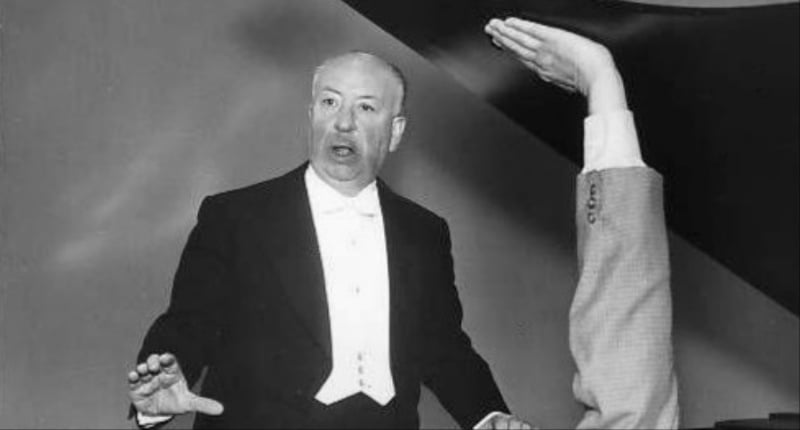
Every week, the silhouette of the master himself would fill the screen, accompanied by the jaunty “Funeral March of a Marionette.” Alfred Hitchcock’s droll, morbidly witty introductions and conclusions were the perfect bookends to 30-minute tales of suspense, murder, and dark irony. Beyond just being horror stories, this anthology series was clever, twisting thrillers that often ended with a gut-punch of a twist, leaving you thinking long after the credits rolled.
Why It Defined the Era: It brought cinematic, high-quality suspense to the small screen. Hitchcock lent his brand and his genius to television, giving the medium a new level of prestige and proving that TV could be as sophisticated and chilling as the movies.
4. Your Show of Shows (1950-1954)
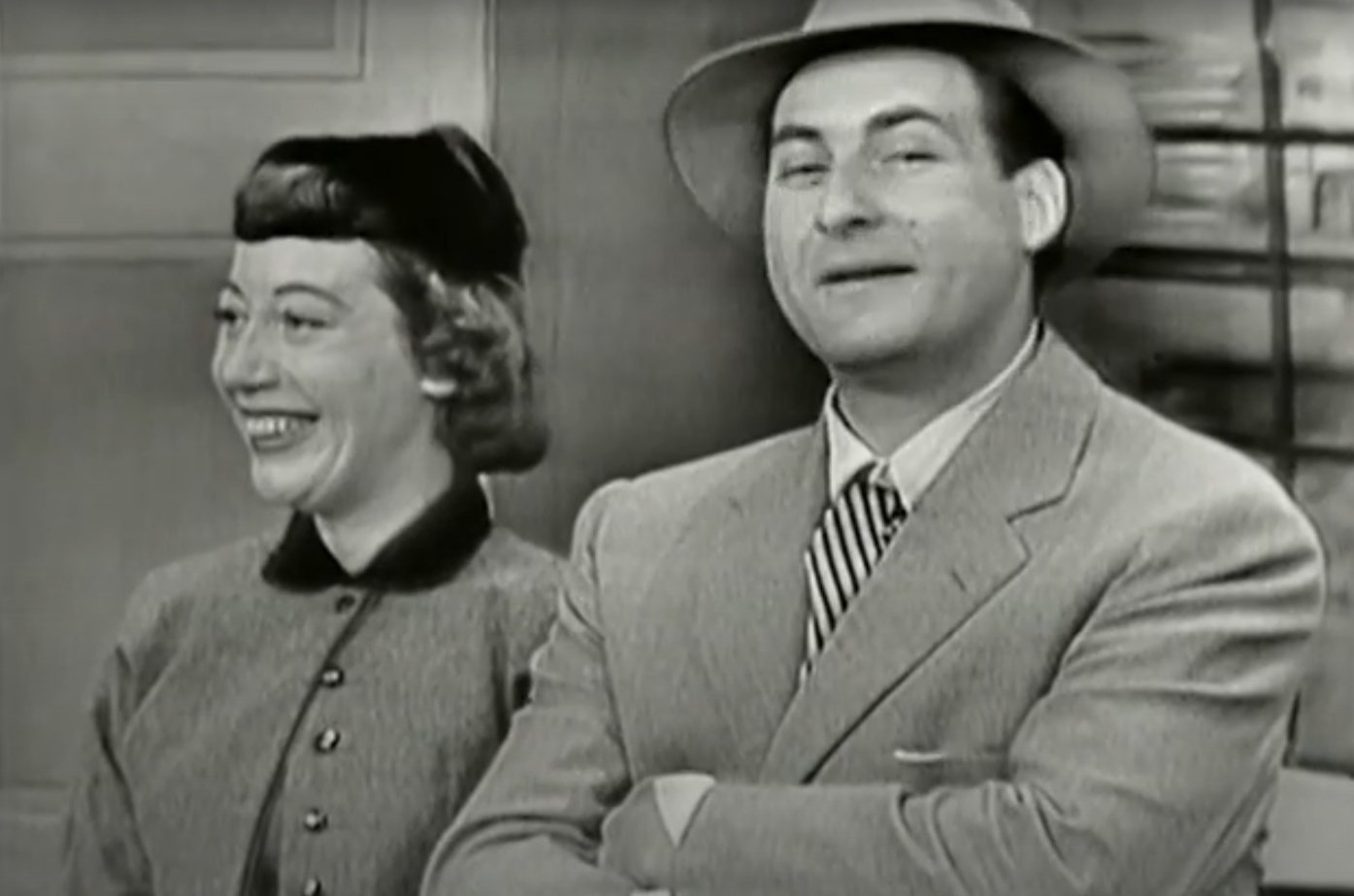
Before Saturday Night Live, there was Your Show of Shows. This 90-minute, live-broadcast variety program was a chaotic, brilliant explosion of talent, led by the comedic titan Sid Caesar. The series featured movie parodies, recurring characters, and absurdist sketches performed by Caesar, Imogene Coca, Carl Reiner, and Howard Morris. The legendary writers’ room included future icons like Mel Brooks and Neil Simon. Make no mistake: this was where modern sketch comedy was born.
Why It Defined the Era: It proved that live television could be an electrifying, high-stakes art form. Its influence is immeasurable, forming the DNA of virtually every sketch comedy show that followed.
3. The Honeymooners (1955-1956)

With the iconic threat, “To the moon, Alice!”, The Honeymooners shattered the mold of the perfect 1950s family. In an era of pristine suburbs, Ralph Kramden and Ed Norton were something else entirely. A blustering bus driver and a cheerful sewer worker, they were working-class guys in a cramped Bensonhurst apartment dreaming of their next big scheme.
Performed almost like a one-act play before a live studio audience, with very few stops or retakes, the show crackled with raw, theatrical energy. Jackie Gleason’s Ralph was a powder keg of frustration, but his love for his long-suffering wife Alice (the brilliant Audrey Meadows) always shone through.
Why It Defined the Era: Its monumental impact was cemented in a single, legendary season that produced the “Classic 39” episodes. While the characters existed in sketches for years, this concentrated run as a sitcom was a landmark, establishing the working-class family as a television staple and influencing everything from The Flintstones to The Simpsons and Roseanne.
2. The Twilight Zone (1959-1964)

“You’re traveling through another dimension, a dimension not only of sight and sound but of mind…” With that chilling invitation, Rod Serling welcomed viewers to his masterpiece. Far from being just a sci-fi show, The Twilight Zone was a weekly morality play that used aliens, robots, and supernatural phenomena to explore the human condition. With its shocking twist endings and brilliant social commentary on conformity, prejudice, and the Cold War, the series was light-years ahead of its time.
Why It Defined the Era: It proved that genre television could be high art. It treated its audience with intelligence, delivering thought-provoking stories that are just as relevant today. It is, without question, one of the most important and influential shows ever made.
1. I Love Lucy (1951-1957)

There’s television before Lucy, and there’s the one after. It’s that simple. Lucille Ball was not just your run-of-the-mill sitcom star; she was a comedic hurricane, a brilliant physical performer, and a savvy businesswoman. The show, which followed the zany antics of a New York housewife trying to break into show business, did more than make people laugh—it perfected the modern sitcom.
Why It Defined the Era: Let’s count the ways. It was the first show filmed in front of a live studio audience using the three-camera technique (still the standard today). It was shot on high-quality 35mm film, which is why the reruns still look fantastic. Its success turned Desilu Productions into a major Hollywood studio. And it proved that a woman could be one of the funniest, most powerful people on TV.

